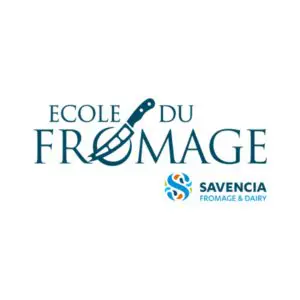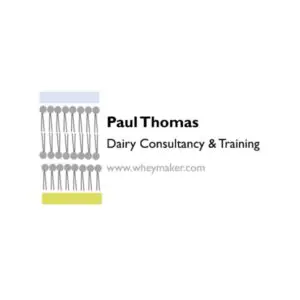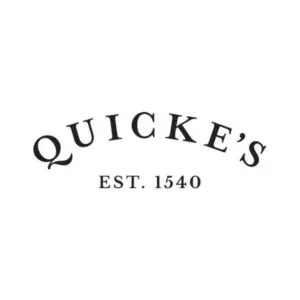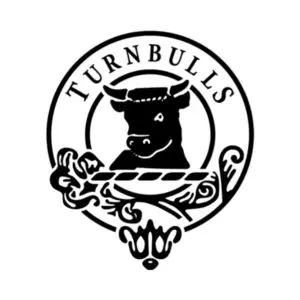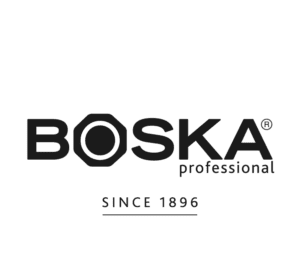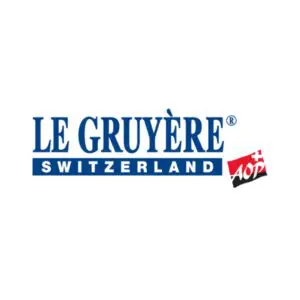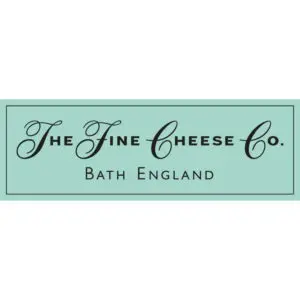#TNCN with Charlie Turnbull. Charlie Turnbull meets Claire Burt of Burt’s Cheese, Knutsford Cheshire. After a career in the dairy industry, 11 years ago Claire decided to get her own hands into the curd. Since then she has been Observer’s Best Producer, and won numerous awards including Gold and Nantwich with her Burt’s Blue and Drunken Burt.
GUIDE TO TASTING CHEESE
Learn about the four stages of tasting cheese and how to take tasting notes with this definitive guide to tasting cheese.
Meet the Cheesemaker Episode Video Transcript
Good evening, everybody it is Charlie Turnbull, oh let’s get rid of that we don’t need that it is Tuesday Night’s Cheese Night. Welcome to the autumn season, it’s season two that’s what my wife tells me to say season two Tuesday Night’s Cheese Night. We’ve got a lovely group of sessions lined up for you guys to taste cheese we’ve got Catherine Mead next week talking about the specialist cheese association.
We’re going to explore the world with South American cheeses and wine it is big it is cheesy it’s all me i’ve also got some new toys look at this i’ve got my little uh things welcome to tnc i rather like this playing around with it earlier what else we do up here uh what about ladies so uh i like this one tune in fill up and cheese out i mean should that be my strap line i’m rather liking that well when we get rid of that one uh i think we’ll probably have a bit of academy of cheese not all of course you know that the academy of cheese is all about training it’s been a tricky summer for the whole of the cheese industry some of us have done quite well some of us have done quite badly um it’s quite tricky for some of the small cheese makers out there so for those of you that have been buying cheese off the small people we love you very much we love you very much keep buying those great cheeses keep buying those great cheeses uh what else can we say so we’ve been doing some training some training there’s been a lot of online trainings uh good to see i’ve done some training we’ve had my biggest class yet very very much like i had five people internationally we had two people from belarus we’ve got uh somebody from australia somewhere from america the academy cheese is truly truly international we’re going global even if no one else is right what we’ve got for you tonight we have claire but claire burke makes two fantastic cheeses oh uh yes no that’s not drunken the cheese is drunk and this is drunken burt and burt’s blue so let’s put her in let’s find her uh let’s get some comments we’ve got some comments as well before we do that uh jesus hello and sally nice to meet you too right uh claire bring you on right welcome lovely to see you good evening i’m grateful hello hello hello uh welcome you appear to be in your kitchen i am yes we’re not going to be seeing your dairy tonight then no background no there’s nothing in the background and there is a little dangerous looking knives there i’m assuming that your husband is totally yeah it’s sinister yeah well welcome welcome uh let’s let’s tell us just kick off with the good stuff what are we tasting tonight and then we can hear about you okay um so we’ve got our burt’s blue which um we’ve got the little little birds blue tonight we do make it in a bigger wheel but we’ve just got the little ones that’s the one and that was what we started out making and that’s what we make most of um and then we’ve also got our drum convert which is um we have a wedge of the large one uh which i think you’ve got as well to try and just for um just because the cheese that we are trying tonight the larger cheese is a very young uh version of the the drunken book i’ve actually got a smaller much riper actually almost overripe and just to show you the difference between how that cheese matures from being a very young cheese to as i say the more mature well let’s let’s come on to that um and you can tell us what overripe means how long your cheese sort of keeps for when do you think it’s perfect are you gonna be one of those cheese makers who goes we have to keep it past the best before date don’t tell the eho or does it actually nicely mature inside it’s allotted period um but you know tell us about you where are you so where you from where are you sitting where is your home so um homies and ultringham uh which is on the sort of um south manchester trafford cheshire border depending on um yeah so we i think our postcode is a cheshire postcode we’re actually in the borough of trafford yes so yeah so we just we just faced um we went up when i first started out i was based at the the cookery school in altringham which is probably just a mile from from here um in the back of a sort of um well a very uh basically a warehouse which um was a kitchen center and then we developed a cookery school and we had um the side of a building which it started out at two and a half meters and it tapered down to about a meter um so it was very cramped it was very small but it just what it did do was get me started it made me um like a scale up from home and when i first started making um what you were a chef or a cook at that point i worked um i did food and nutrition as a background in my degree and then um went into product development and was working for a large irish dairy cooperative called dairy gold food ingredients okay they’re citing crew and that role it was a great role really i was there for six years i was very lucky that we went to visit lots of cheese makers across europe ireland where they had the manufacturing sites oh okay so denmark were you cutting your teeth on the big boys or or these small small producers it was all business to business so what we took was 20 kilo blocks of cheddar blue plastic bags in a grated or sliced format nothing like an artisan um or small producer um so 10 years ago 2019 no 2009 you you bit the bullet decided that cheese was your future uh and in a different way to your past and what you’ve chosen you’ve chosen in my opinion quite tricky cheeses i mean let me take this chappie this is this is beautiful this is beautiful so i’ve cut them open this is your bert’s blue so i’m guessing a bit sort of 200 grams something like that when we we’re always a bit generous on the film we do it all by hand so it’s all hand leveled into single molds there’s no sort of tipping and or pouring so um they do vary a little bit in size um but they gem we sell them as a 180 gram but they can be 200 and 200 plus sometimes but this is this is this is squeezy what kind of milk are we talking with cow’s milk obviously cow’s milk and it’s pasteurized and we’re making a soft and a mold ripened cheese we choose to pasteurize the milk um yeah and we um so i think the one you’ve got there is about seven weeks old yeah i’ve got a i’ve got a day um but we talking holstein frisian uh yeah we we actually take a pool of milk so there will be some holstein frisian um in the mix and um you get all your milk from from cheshire basically 23 local farms three three local farms uh cheshire milk so we take from that pool of milk because we we um we’ve got sarah appleby coming on in uh four weeks five weeks something like that um so we did some work on with her on what makes the original cheshire recipes and a lot of it was about the the summer grass going down those the the rivers you’ve got coming through cheshire which gives that meadow grazing and a lot of the traditional changes were cheshire’s worth summer cheeses because they would you know get the cheese down make a lot of it but then take hours off and do something different with them during the winter and the cheese had to go right through the winter so it’s got a real history possibly the oldest history of grazing for dairy in the whole of the uk around you yeah i mean if you look back at that yeah the history of cheese making and cheshire cheese which has some of my bedtime reading i’d like to just most recently i’ve been reading a bit more about the history of cheshire cheese and it is it’s a fascinating even to how sort of the um yeah the trade then opened up between cheshire and london and how that sort of the backwards and forward changed obviously down and the empty carriages coming back would bring things back from london and you’ve opened up a whole yes it was a huge huge history to the local area and chester in particular but you took you decided to go blue now i’m we’re not a nerd moment i’m gonna have two node moments tonight sorry if you are just dropping in and wanting to know just about the tasting the cheese but i want to know how you make soft blue cheese because all of us in the industry know that to get blue to flower to go blue you need to still need to pierce cheese but if you make soft cheese how do you stop the holes closing up so first nerdy question of the night how do you stop the poles closing up um well some of it is probably there’s a little bit of um not knowing always right the answers to the blue i mean the blooming on the little cheese we have we’ve never never struggled to get the bluing um on the little one it’s um we actually place it um through the sides on that one rather than an up and down which is why we’re seeing those sort of horizontal lines exactly yeah we’ve already got the sort of the lines through the paste um what texture is the curd when you’re piercing it i’m taking it it’s not as gooey as we’re looking at now no no so it’s um day anywhere between day five and day seven with this liquor ones oh really really yeah young and um at that point they’re still white there’s no surface mold nothing’s grown on the outside yeah pretty pretty much uninteresting sort of just uh white and you wouldn’t know it was blue at that stage there’s no there might be a little pinprick sign of a little bit of blue but but nothing really um and then we pierced all by hand uh when i first first started making i made a bat of about 10 10 at the time and that was fine just to go in with a single needle through the side right and then when i jumped up to my with the bat that we have now and i made probably i don’t know 100 150 and i suddenly arrived to do the pacing i’m like oh crikey it’s going to take me a long time it’s not going to work for you no it’s not going to work so luckily um spoke to my dad and he’s quite sort of handy and thoughtful around engineering solutions but it’s just a simple fill handheld but it’s got four prongs on it and it’s simply turn turn turn and it goes and that’s enough at that page for it to open up and allow the oxygen to let the blue grow and because it’s quite it’s quite a shallow cheese you don’t you know you don’t need whole knitting needles you just need to go in sort of the cheese the challenge the more challenging one we have for us is the larger cheese we do so we always used to struggle to get enough blue through that and then when we did that still not hugely deep i’d say about eight centimeters eight ten centimeters okay that’s about that i think about that yeah and yeah it’s probably about that on its side uh okay cool all right guide us in public multiply choose the cheese and tell people i’m going to give you a bit of the whole screen here i’m i’ve got some new toys by the way people look at this there we go oh there we go again uh so let’s give you the whole screen and tell us about your burt’s blue okay um so bert’s blue um we do as a little a little baby trucker which uh we’ve been looking at tonight and bert’s blue um it starts out uh obviously day one um in the bat uh we drain the curds overnight um and we knock them out of the molds day two and then we dry salt dry salt the cheeses by hand we played around with brine salting but for us the dry salt and just gives us the control and the the finished product that we like so the little cheese is pierced at day day five day six and then it really changes massively i mean if you tried this cheese when it’s wrapped at two weeks it would be fairly hard uh you wouldn’t have any of this kind of gooey ripening it would be more much more like the the drunken bird that we’ve got which is very young it’s not broken down it’s not got that nice kind of squishy that we’ve got going on here looks like a sort of geotrichum a kind of the yeasty kind of rhine from us from a from a crota or something but it’s much bigger in character but it’s got that calculating vermiculated look to it so what is that mold so that’s just the blue bacillium that we inoculate and milk in the vitamins it’s just yeah so you’re eating on the outside inside is the same as the outside yeah so people always people always ask us you know can you can you eat the rind um yeah but i don’t think people are as used to seeing a blue mold outside as they are like a brie or a camembert so it’s um it’s just a bit about education i suppose that yes the blue that you eat that you’ve just eaten on the inside is just what you’ve got on the outside talking of education the academy of cheese is an excellent place to learn just gonna drop that in there okay so we’ve got blue on the outside blue on the inside um and so so it’s the blue the penicillium rock 40 is breaking down the curd from the hockey puck like that kind of texture yes so that so it’s doing the same job as the camemberty wood or something like that in terms of what you might call secondary fermentation it’s breaking down the curd into that into that exactly but with this with a little one um different to the larger one we make obviously you get a lot more surface ripening and that’s why you get that real sort of separation that real goo almost almost a slip coat kind of thing yeah yeah i mean it depends a little bit this is taken right to the end of its life really that’s about as i say between seven and eight weeks i’m really loving what is it supposed to taste like i’ve already eaten too much but it’s what’s how it that to me is how it should eat you know it should be soft it should be gooey it should be sort of having that bit of a sag um but unfortunately you know he’s going to be everything sag i’m just going to say that um unfortunately if it goes out too young it’s there’s always that window isn’t there if it if it going out and it’s it hasn’t quite developed yeah yeah and then it got to the customer and to me then it’d be it i never wanted to be disappointing um and be too too young but then over ripen you know just go beyond what’s i think what’s next tell me what flavor profile you know if you’re describing this over the table in a farmer’s market to a customer who’s not going to taste it right then what do you tell them to expect what’s that i always say it’s kind of it’s quite an approachable blue it’s not um i wouldn’t say it’s beginning as blue because obviously that sounds a bit i don’t know but it’s kind of like it’s blue but i don’t think this is one though i think it’s approachable i think it’s kind of it’s it’s not because it’s soft because it’s um it has quite creamy notes i think it has some like buttery notes um you do pick up some of the obviously as it as it ages you do get a little bit more sort of flavor through from the rind um but i’d say it’s it you know shouldn’t have any bitterness at this age profile i my experience is that people have very different awareness of bitterness so some people would say that it’s not bitter and other people will go oh quite bitter um bitterness i think there is a bit but it’s a it’s um it’s a vegetable bitterness it’s not of that quinine kind of just a chemically bitterness which i think is definitely the nastier end of the chemicals on the bitter spectrum i think you’re getting um i think it’s getting a certain woodiness um there’s i think yeah and and there is that creamy but if the texture is where the cream really delivers i think you really get that lovely sweep of cream over the tongue um towards the back of the throat and the sort of woody mushroom mushroomy uh quite punchy aromatic and um in a good way the damp carpet yeah um comes in as well if you can have damp carpet in a good way in a good way yeah i think you’re right i think the creaminess i think the texture if there is a little bit of um bitterness it does it does soften and it kind of balances balances that blue and bitter bitter flavor if there is anything well um we’ve got where’s where’s my thingy uh right allison anderson has sent us through a picture of her cheeseboard which i’m gonna bring on board uh so she’s got one of your drunken um your blurts blue down there on on the corner um it looks like she’s she’s matching it with some teta moist which could be a first possibly in a purse and i don’t know what little bottom left hand is but that is a that is a cheese board to beat if anybody out there has got a cheeseboard that looks better than that i want to see pictures please send them in um and if you’re tasting any of claire’s cheeses tonight please drop a comment in the comments bar because i want to hear what it tastes like from other pages because i’m guessing that this is going to highly depend on what the person who sells it to them tastes like i mean uh you know if you’ve got a retailer who knows how to look after your cheese he’s going to sell a better product than one perhaps he’s just bunging it in a cold multi deck and yeah i think that’s the thing you know and i always just think age it changes so much so from two weeks when we take it out of the maturing rooms we’ll wrap it and go into the cold store it could then leave us at that stage but then it’s you know it’s about then its journey towards sort of the age profile that it’s at now that we’re eating it which is sort of seven eight weeks i’m great this enough this is properly delicious it’s probably gonna be very embarrassing and say i’ve never had this before okay and it’s now climbing into my top five i really know i i know that you don’t want to believe this but i’m really 50 next year i know strange is true and i’m one of my gift is now i can get 50 cheeses for my 50th birthday and this is definitely it comfortably climbs the ranks awesome so what’s next so we haven’t got the the larger blue but the larger blue because it we age that again it’s like just a little bit longer than we can the smaller blue that gives us the opportunity for a little bit more flavors to develop but it never quite goes as soft as the small ones the small ones still yes small ones my party because i love that that’s that’s monstrous cool um and the next one we’ve got is the uh the drum convert so yeah the drum convert um unfortunately with the drunken birth um just because of sort of everything that happened earlier in the year um we concentrated on making the blue and keeping that as our core keeping it simple and so we we have started making the drum convert and sales have gone up so we’ve got we’re sort of trying to catch up all the time so this hasn’t got much age on it at all um you can still eat it at this age and it’s just a very different cheese to me um it still has a lot of that sort of zing and freshness of a sort of a very young curd it hasn’t really broken down um we talked yesterday morning let me and you recommended that i that i left mine out so you gave me two pieces thank you for generosity and so let’s put this one on the camera this is the one that stayed in the fridge since yesterday i don’t know if you can see that but we’re getting a little bit of breakdown under the skin but it’s what two to three millimeters maximum there um now the one that we’ve left out yesterday and i left it sort of next to my washing machine has got more breakdown oh okay yep um but that’s sort of interesting for the people watching to see that’s 24 hours probably you know nearly 30 40 35 hours um and that’s all it’s done so how do you how what’s it what time does it need to get you know gooey all the way through we’re talking weeks really i suppose i think um if we left that um another three four weeks it would never probably go quite as um so this is this is a small version of the drunken is overripe as it were this has gone beyond what we would sell it at um you can see its consistency all the way through it’s it’s it’s really kind of the camera it’s got that kind of glisten to it hasn’t it got something really broken down yeah it’s got a bit of a smell to it yeah it’s got more of this more of the surface sort of wash smell that you might get rather than them all you’ve not told us what’s it washed in so it’s washed in guac insider there okay spider um and the reason we chose that was because when tom came on board um when when we scaled up premises uh back in 2013 um he’s from hereford originally his preferred cider and don’t particularly drink cider or haven’t hadn’t in the past know much about ciders but tom um tom did know like quite a lot about outsiders and perry fan okay so it’s it’s i’m just i just went in with a creamy bit to find out what it tastes like and you’re getting the sweetness of the apple actually you really are okay so for our viewers at home let’s just talk about washing the curd okay the purpose of what but not washing the code pod and washing the rind the purpose is to raise the acidity and allow the formation of bacteria so it becomes a bacteria ripened cheese and the bacteria itself break down and sort of in a slightly cool fireworksy kind of way they explode release their enzymes into the cheese and then start breaking it down but enzymes are notoriously slow um and they’ve got a long way to go on this one which is why we take some more so so your can you just remind me what you said about this is a couple of weeks old i think you said yeah so we still we still inoculate the the drunken bird with the blue which is why we’ve got um a sort of a still got a kind of a mouldy surface and yeah even on this cheese you’ve got sort of different molds um sort of slight variations in sort of that kind of colors and more sort of i’ve got very much different i’ve got a much darker color on one side yeah and then a much lighter color on the outside as if we’ve got more washed rind on the top and yeah blue movement on the bottom and that’s the the small that i’ve got here which is really quite oh i’m not very good with this camera there you can really see it’s much more sort of um that kind of washed around but we still have the the mold on the outside or the psyllium but like you say we’ve obviously got other things going on um with with the washer beside the wash we don’t wash in a typical wash round um like brine you know and continually wash it um over successive days we just tumble it um twice around about day day five to six and then probably around about day ten okay yeah lightly washed and at that point we do damage the mold because the mold is just beginning to show around about day seven day eight day nine um on the surface so it sort of does break down what mold is growing but still still allowing some to come through so flavor-wise what are you asking your what are you asking the cheese to deliver for your customers yeah i mean i suppose it does carry us a very mild blue flavor um and some people as i say pick up that more on some people are most likely to say sensitive to bitter some people seem to be more sensitive to the blue flavor and pick that blue flavor up i don’t i don’t particularly pick up the blue on on the drum convert and especially when it’s more broken down and i’m getting off the right i’m not getting any others there’s not much um the drunken bird when it’s fully matured and soft and squidgy um i think yeah i think it’s almost like it changes from like you say that appley freshness that you get when it’s younger yeah you almost get a sort of um it sounds strange but it’s almost like a leathery note almost more more pronounced sometimes you get that on a side of sort of like a leathery right word but and that’s what you pick up as as the cheese develops and it softens and it breaks down i’ve definitely it just hasn’t got there yet it’s still in nappies in cheetah it’s unfortunate that we didn’t have anything older to send you all right well i’m going to go back to this because i think the um the blue one is is in such good condition and it shows the importance of condition people think they know a cheese but they don’t you know they know the cheese of a certain condition or or they like it at a certain place in its life yeah some people like the younger blue to me to me that’s not when it should be eaten when it’s still firm but you know it’s personal preference isn’t it some people like the firm occurred and they’re like more up front bitterness and to me it’s nice and it’s soft and it’s and it’s sort of it’s going and it’s i like gooey yeah no my my favorite soft cheese is that gorgonzola dolce that young blue um you know you can bathe your face in it and you feel you’re gonna be 10 years younger afterwards right um so no no i understand that um you are thinking we will be uh going down to one herd in the next few days for your milk that must be pretty scary yeah we’re gonna we’re gonna trial um we’re gonna try it we’re obviously we’re lucky to have uh the milk we’re using um but there’s an opportunity to go um sort of to to go to a single herd which will present different challenges for us but um you know with 20 years well 10 years since i started a lot and we continue to learn and i enjoy the challenges that she’s you know we’ve had lots of challenges along the way between different wild moulds that we might have picked up um you know on the blues and then like we’re saying on the larger blues not getting enough blueing in and learning about how we pierce those um to just trying to make a sort of a consistent consistent product we make quite small batches so you know if we were doing five makes a week you know more variation across those at the beginning of the week and start up and then at the end end of the week with a single heard this you’re you’re going to get a sort of a potential balance with a negative of more volatility and the positive of more flavor from a single herb milk and and you know that’s that’s choppy waters for someone who’s ten years is is it both a long time i know and not a long time as well um i mean when do you think you cracked the recipe after how many years oh i don’t know i look back at some of the early cheeses we made and uh i don’t cringe but i think i think we’ve come a long way shall we say from the early days of you oh grandma and claire you haven’t lived you’ve got a few regrets people have this thing about don’t have any regrets i quite disagree i think you’ve got to have a few if you haven’t got a few regrets you you’ve not done it hard enough um uh so no you had to you had to feel your way so when do you think you got it when do you think bert’s blue was something that you know you could reliably turn out with pride i’d say it was probably it was probably after we left the cookery school and we probably were still a year or two into the new premises so we probably you know five six i’d say five six years on from when i first started making um to where i know i know and yet you’re learning and still now though we still that’s what’s exciting i like about cheese making it presents challenges and yeah it’s it’s always learning i think it is indeed always learning um it’s one of those it’s one of those things with with cheese that so much is invisible you know you cannot see the bacteria working you don’t see the molds working you know and so you’re going on trust you’re going on your experience you’re going on well i hope it does what it did yesterday and then something sneaks in around the side that’s equally invisible and throws you off sideways and you’ve got to be paying attention to it i think that’s it i think especially with some of the some of the molds that we pick up um you know sometimes they’re not as attractive looking and and that can you know you do eat with your eyes you know you do people people’s perception of it picking up some wild white molds and it it just sort of you know to me i think the one i think that’s the one you’ve got or the one you know it’s the balance of sort of i like the gray and the blue when they mix together um but it doesn’t like that no and you’re familiar with it which is you you know what the colors you can probably look at your cheese no fair idea what it tastes like because you’ve been doing it for 10 years yes where somebody comes to your store in the farmer’s market whether and goes you’re joking right i’m supposed to eat you know something year old or whatever it is even at wrapping stage you know like i can always tell if it’s got this like little lip on some of them i think that’s gonna that’s gonna break down to have a nice separation it’s almost like it’s even it doesn’t yeah yeah we always need a good breakdown every now and again well claire it’s been fantastic to talk to you um we need oh i’ve got a little banner where’s my banner come back to me little banner here we go there we go so we want to say show this buy cheese i doubt my little banners at burt’s cheese dot co dot uk so everyone out there who wants to try this awesome soft cheese claire will send you the best in her in her cellar won’t you claire i shall yeah that is a bargain cue up everybody for that um thank you very much claire say goodbye goodbye right what a nice lady what a nice cheese that is really quality i’m really sad things i can’t believe i don’t know this cheese better than i do um really interesting facts there about how the cheese is made and how she gets it to soften up using penicillium rock 40 not traditional um uh washed rind or penicillin coming back you’re under the stuff that we’re more familiar with using just about 40 so cool um right so if you need to learn more about cheese of course the academy of cheese is totally available i have another banner where’s my banner come on there we go uh canadacheese.org so if you want to know more about cheese there’s another banner here what’s that one say uh charlie t is awesome and cheesy delicious obviously true okay fantastic see you next week it’s going to be catherine mead catherine reed of the specialist cheese making uh such a specialist cheese makers association but much more famous for her cornish yard her garlic yard and one of my all-time favorite favorites the cornish kern down from natura so she’ll be joining us to talk about all the support specialist cheese making has makers association has given to cheese makers since it was founded oh i’m not guessing probably 30 40 years ago something like that hope to see you then have a wonderful week choose tonight’s cheese night we’re back next week love you all right yes that works fantastic see you soon





